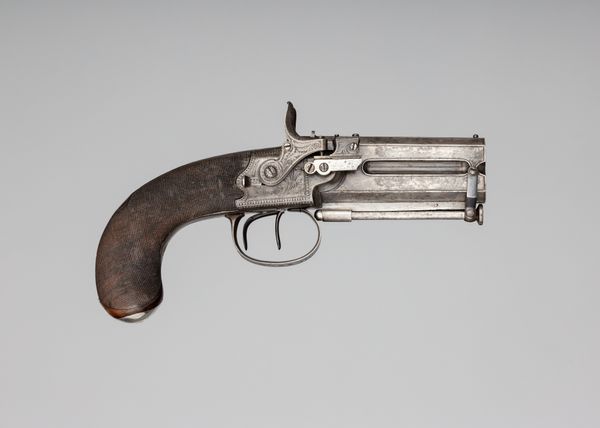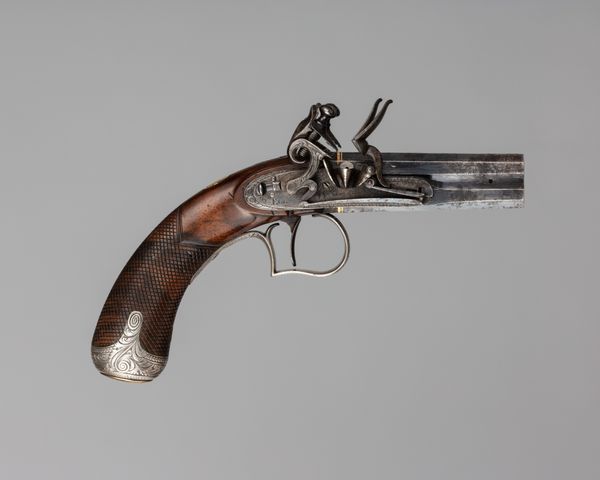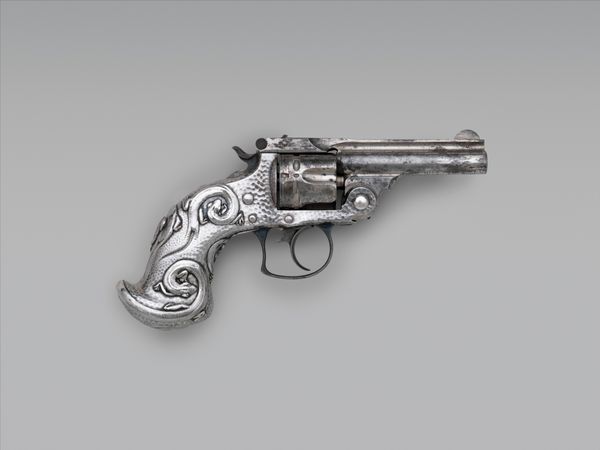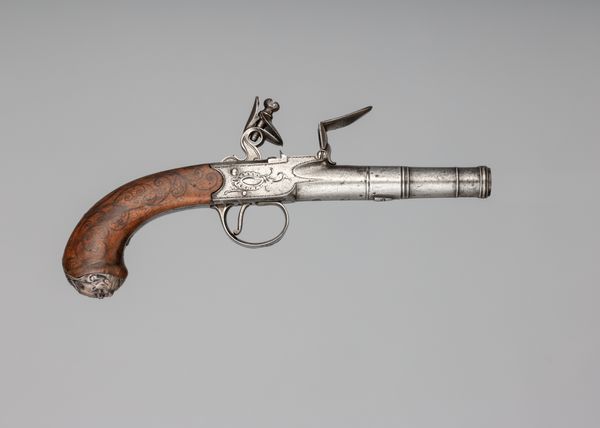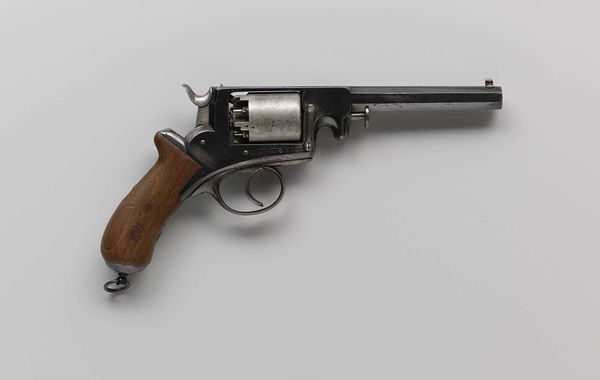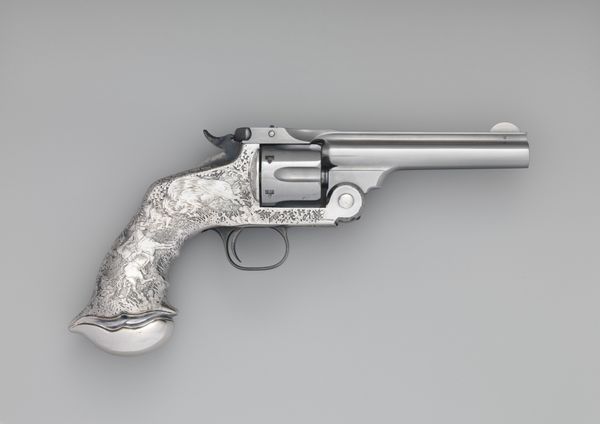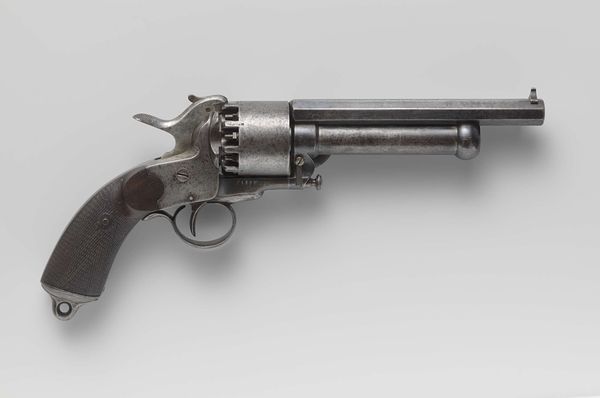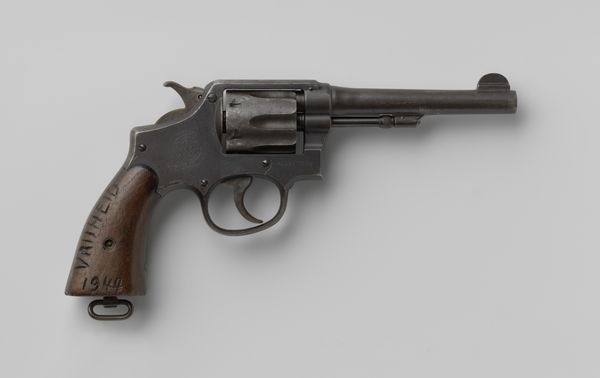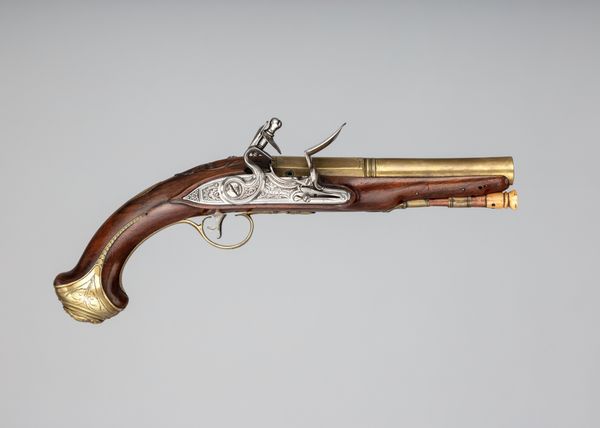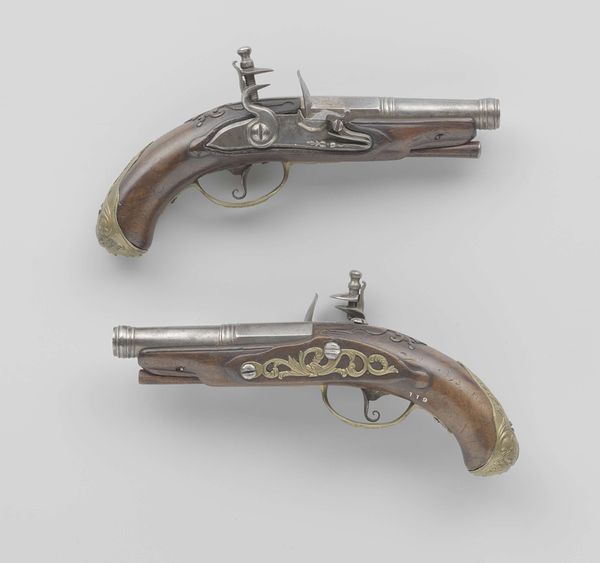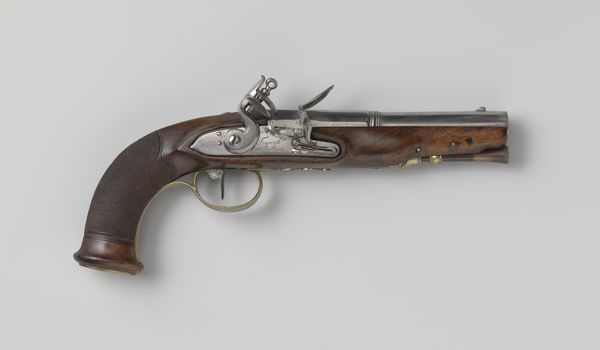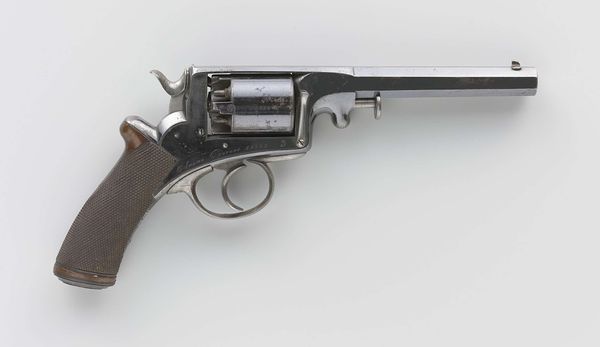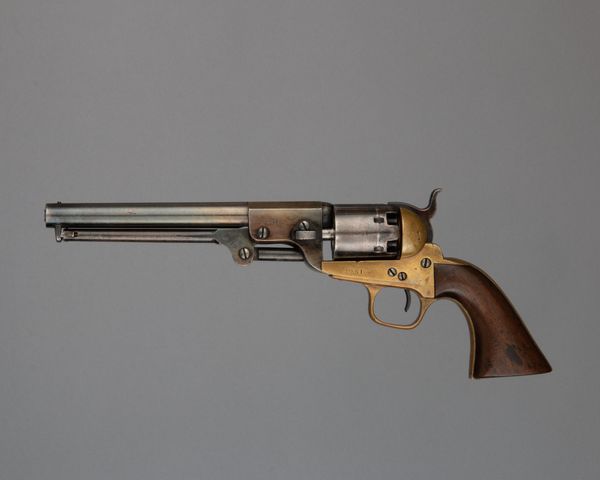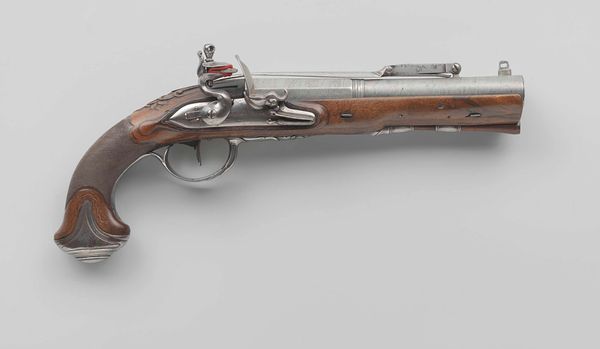
Dimensions: length 22.2 cm, calibre 11 mm, length 10.3 cm
Copyright: Rijks Museum: Open Domain
Editor: Here we have "Zakpistool met kastslot van Generaal baron Chassé," which roughly translates to "Pocket pistol with box lock of General Baron Chassé." It dates somewhere between 1765 and 1850. The piece is primarily wood, brass, and metal, and something about the gleam of the brass juxtaposed with the dark wood makes it seem rather ominous. What draws your eye to this piece? Curator: Ominous is an interesting word for it! Perhaps because it represents such concentrated power, nestled right there in your palm. The Baroque era loved these ornate, slightly menacing objects, didn't they? To me, the pistol speaks of a very particular time – that long 75 year span accounts for political upheavals, technological advancements... I can't help but wonder where it was during all that! What secrets could it tell? Do you get the feeling this weapon saw action, or do you think it's a status symbol? Editor: I can see it as both, really. Functional art almost. Curator: Precisely! It's trying to decide which role is more important! And then you think about the General who owned it. What kind of man was Chassé? Would he carry this concealed, or show it off to his peers? Editor: Good point. Considering how personal it must have been to own a weapon, how does its display in a museum affect your reading of the artwork? Curator: You know, I think it both sanitizes it and heightens it. Stripped of its immediate purpose, it's now an object of contemplation, a portal to history, really. But doesn't it make you think differently about war and conflict, seeing it presented like this? Almost an artifact. Editor: It does. Makes me consider how objects survive to tell stories we don't know. Curator: Exactly! We learn a new narrative. Thanks for pointing that out.
Comments
No comments
Be the first to comment and join the conversation on the ultimate creative platform.
